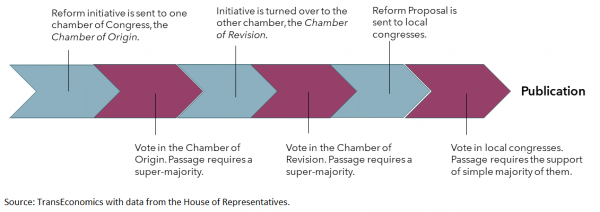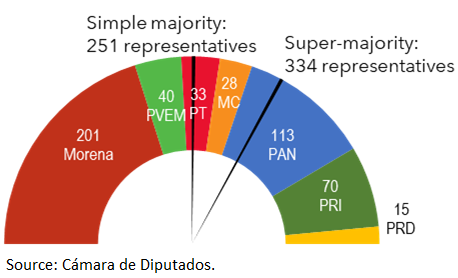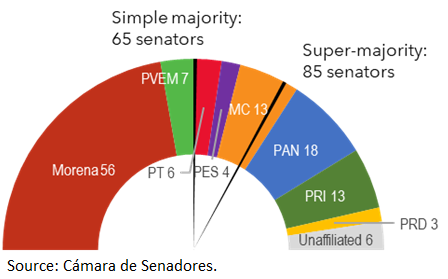Can the president reform the Constitution?
Delia Paredes & Genevieve Signoret
(Hay una versión en español de este artículo aquí.)
In his press conference from Friday 12 January, President Andrés Manuel López Obrador (AMLO) announced that, on Constitution Day (February 5), he’ll present a package of constitutional reform proposals:
- The direct election of Supreme Court judges;
- A weakened electoral authority;
- A dismantling of the current pension system;
- Mandatory inflation adjustment to the minimum wage.
Given the current composition of the Congress of the Union, these reforms have virtually no chance of passage before June. But after the June 2 elections, they could be passed.
What’s a “fast-track” reform initiative?
The president has the right to send to Congress proposals to reform any law he deems appropriate. And the Constitution allows him to present two of them per session as “fast-track” (in Spanish: preferente) bills. Congress must act on fast-track bills within 31 days. Article 71, however, prohibits the president from putting constitutional reform bills on the fast track; lawmakers may choose to act quickly on these bills but are under no obligation to do so.
Constitutional reforms require a two-thirds majority (a super-majority) of votes from both chambers and simple-majority passage by state legislatures. A simple majority is one half plus one.
Approving a constitutional reform requires a super-majority in both chambers of Congress and a simple majority of the local congresses
Mexico’s Constitutional reform process

Constitutional reform before June 2 is not feasible
On February 1, the second regular session period of the Mexican Congress will begin. This final congressional session before the June 2 elections will end on April 30.
AMLO currently lacks the votes to pass constitutional reforms in this period. Assuming that all members of the lower house show up on voting day, whereas an absolute majority would require only 251 votes of the 500 total, a super-majority would require 334.
Morena and its alliance partners the Green Party of Mexico (Partido Verde Ecologista de México, or PVEM) and the Labor Party (Partido del Trabajo, or PT) together could bring 273 votes—enough for a simple majority but not a super-majority. To achieve a super-majority, the coalition would need to secure 61 votes from outside parties.
Likewise, the Morena-PVEM-PT alliance lacks a super-majority in the Senate, where they’re short 12 votes.
We see it as highly unlikely that opposition parties would vote with the Morena-PVEM-PT coalition during the current campaign season.
AMLO is short the votes needed to pass constitutional reforms
Party breakdown and congressional votes needed to pass a constitutional reform
|
Lower chamber |
Upper chamber |
|
|---|---|---|
 |
 |
Note: The Morena-PVEM-PT coalition can achieve the super-majority in both cases with votes from any combination of parties; the order of parliamentary groups in our chart should not be construed as an opinion as to where any additional votes might come from.
After the elections, the story changes
The president will have a second opportunity to pass his reforms in the congressional session to begin on September 1. Whether he can succeed or not will depend on the outcome of the June 2 elections and perhaps whether, with elections by then behind us, he can tempt enough non-coalition party members to jump ship.
The risk looms.

